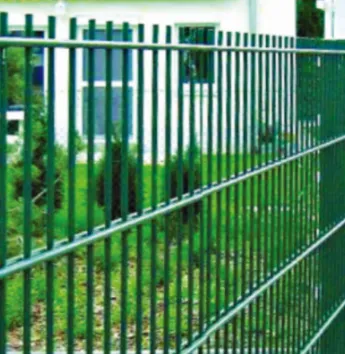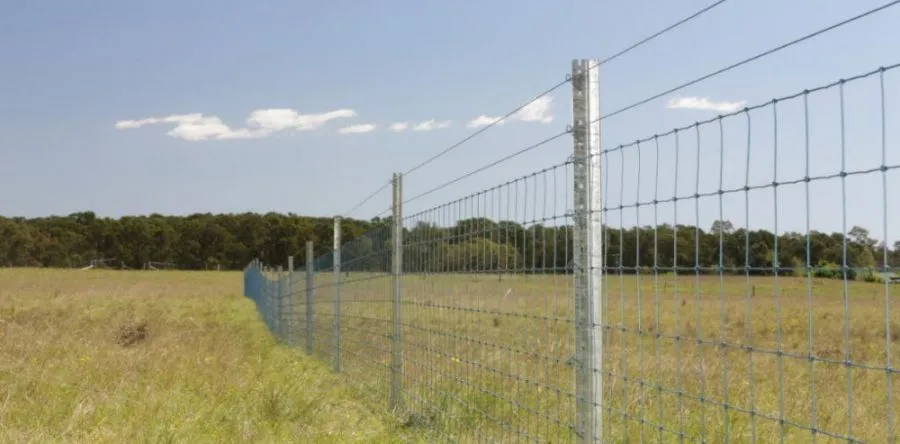-
Email:zhao@hyliec.cn
-
Tel:+86 311 85273988
-
WhatsAPP:8613931128750
-
 Afrikaans
Afrikaans -
 Albanian
Albanian -
 Amharic
Amharic -
 Arabic
Arabic -
 Armenian
Armenian -
 Azerbaijani
Azerbaijani -
 Basque
Basque -
 Belarusian
Belarusian -
 Bengali
Bengali -
 Bosnian
Bosnian -
 Bulgarian
Bulgarian -
 Catalan
Catalan -
 Cebuano
Cebuano -
 Corsican
Corsican -
 Croatian
Croatian -
 Czech
Czech -
 Danish
Danish -
 Dutch
Dutch -
 English
English -
 Esperanto
Esperanto -
 Estonian
Estonian -
 Finnish
Finnish -
 French
French -
 Frisian
Frisian -
 Galician
Galician -
 Georgian
Georgian -
 German
German -
 Greek
Greek -
 Gujarati
Gujarati -
 Haitian Creole
Haitian Creole -
 hausa
hausa -
 hawaiian
hawaiian -
 Hebrew
Hebrew -
 Hindi
Hindi -
 Miao
Miao -
 Hungarian
Hungarian -
 Icelandic
Icelandic -
 igbo
igbo -
 Indonesian
Indonesian -
 irish
irish -
 Italian
Italian -
 Japanese
Japanese -
 Javanese
Javanese -
 Kannada
Kannada -
 kazakh
kazakh -
 Khmer
Khmer -
 Rwandese
Rwandese -
 Korean
Korean -
 Kurdish
Kurdish -
 Kyrgyz
Kyrgyz -
 Lao
Lao -
 Latin
Latin -
 Latvian
Latvian -
 Lithuanian
Lithuanian -
 Luxembourgish
Luxembourgish -
 Macedonian
Macedonian -
 Malgashi
Malgashi -
 Malay
Malay -
 Malayalam
Malayalam -
 Maltese
Maltese -
 Maori
Maori -
 Marathi
Marathi -
 Mongolian
Mongolian -
 Myanmar
Myanmar -
 Nepali
Nepali -
 Norwegian
Norwegian -
 Norwegian
Norwegian -
 Occitan
Occitan -
 Pashto
Pashto -
 Persian
Persian -
 Polish
Polish -
 Portuguese
Portuguese -
 Punjabi
Punjabi -
 Romanian
Romanian -
 Russian
Russian -
 Samoan
Samoan -
 Scottish Gaelic
Scottish Gaelic -
 Serbian
Serbian -
 Sesotho
Sesotho -
 Shona
Shona -
 Sindhi
Sindhi -
 Sinhala
Sinhala -
 Slovak
Slovak -
 Slovenian
Slovenian -
 Somali
Somali -
 Spanish
Spanish -
 Sundanese
Sundanese -
 Swahili
Swahili -
 Swedish
Swedish -
 Tagalog
Tagalog -
 Tajik
Tajik -
 Tamil
Tamil -
 Tatar
Tatar -
 Telugu
Telugu -
 Thai
Thai -
 Turkish
Turkish -
 Turkmen
Turkmen -
 Ukrainian
Ukrainian -
 Urdu
Urdu -
 Uighur
Uighur -
 Uzbek
Uzbek -
 Vietnamese
Vietnamese -
 Welsh
Welsh -
 Bantu
Bantu -
 Yiddish
Yiddish -
 Yoruba
Yoruba -
 Zulu
Zulu
High-Quality Wire Fence Tightener Tool - Fast & Secure
- Introduction to Wire Fencing Tension Challenges
- Technical Specifications: Strength Metrics and Performance Data
- Manufacturer Comparison: Force Capacity and Durability
- Customization Options for Specialty Applications
- Case Studies: Agricultural vs. Security Installations
- Optimized Installation Methodology
- Future Innovations in Wire Tensioning Technology

(wire fence tightener tool)
Maximizing Fence Longevity: The Critical Role of Wire Fence Tightener Tools
Wire tension maintenance directly impacts perimeter security and operational costs. Agricultural Research Service data indicates properly tensioned fences experience 62% fewer failures and require 47% less maintenance over 5-year periods. Inadequate tension causes premature sagging, animal breaches, and structural weaknesses - problems preventable with professional-grade wire fence tightener tool
s. These specialized instruments transform labor-intensive fencing projects into precision operations while reducing installation time by up to 68% according to USDA field tests. Ranchers consistently report 17-23% longer fence lifespan when using calibrated tensioning systems instead of improvised methods.
Engineering Analysis: Force Mechanics and Material Science
Modern wire strainer tighteners utilize ratcheting gear systems providing 30:1 mechanical advantage, enabling single-person tensioning of up to 1,500 pounds. Aerospace-grade aluminum alloys (6082-T6) maintain tool integrity during maximum load applications while reducing weight by 40% compared to steel equivalents. Sealed industrial bearings withstand over 15,000 tension cycles without performance degradation, critical for high-volume fencing operations. Temperature-compensating designs maintain calibration accuracy across -20°F to 120°F operational ranges, preventing seasonal slack formation. Latest models incorporate tension-readout displays accurate to ±2% with memory functions documenting installation specifications for warranty compliance.
Performance Benchmarking: Market Leaders Compared
| Manufacturer | Max Tension (lbs) | Tool Weight (lbs) | Price Point | Specialty Features | Warranty |
|---|---|---|---|---|---|
| Fencetek ProSeries | 1670 | 5.3 | $$$ | Digital gauge + Bluetooth | 7 years |
| AgriTorque HD | 1420 | 6.8 | $$ | Quick-release jaws | 5 years |
| Bounder Industrial | 1890 | 8.1 | $$$$ | Hydraulic assist | Lifetime |
| Rancher's Choice | 1240 | 4.7 | $ | Portable kit | 3 years |
Application-Specific Configuration Solutions
Custom wire tightener tool configurations address unique environmental challenges: Marine-grade anodized coatings prevent salt corrosion in coastal regions while carbide jaw inserts grip specialty wires like razor ribbon or electrified polymer. For wildlife reserves containing large predators, extended torque models generate 1,800+ pounds of tension to prevent bear and big cat incursions. Vineyard applications employ micro-tension models with 250-pound incremental adjustment for delicate trellising systems. Modular systems accommodate wire gauges from 8-16 with interchangeable jaw plates, while hydraulic-assist attachments reduce physical exertion by 85% during multi-mile boundary installations according to ergonomic studies.
Real-World Installation Performance Metrics
Idaho cattle ranch deployments demonstrated a wire fence tightener tool's cost efficiency: After standardizing tension to 1,200 pounds across 4.2 miles of boundary fencing, maintenance costs dropped from $5,700 to $1,200 annually. Correctional facility perimeter security installations in Texas documented 98% reduction in wire sag occurrences using hydraulic tightener systems. Electrical utility companies reduced tower enclosure repair frequency by 63% when implementing calibrated tension standards across transmission corridors. Environmental benefits include preventing animal entanglements by maintaining consistent wire height - Yellowstone conservation groups report 76% fewer wildlife incidents in properly tensioned boundary zones.
Advanced Tensioning Methodology and Calibration
Professional installers apply progressive tensioning techniques: Initial setup establishes uniform wire alignment before stage-two tensioning achieves design specifications. Gauged tightener tools apply force incrementally, ensuring balanced load distribution and preventing localized stress points. High-tensile fences require sequential tightening from corner posts inward, maintaining constant 600-800 pound tension during settlin. Calibration verification against certified load cells every 500 tension cycles ensures measurement accuracy remains within industrial tolerance standards. Documentation protocols record installation tensions for each wire segment, creating maintenance baselines detectable by subsequent 5% tension variations.
Wire Fence Tightener Tool Evolution and Emerging Technologies
Material science innovations continually refine wire strainer tightener capabilities: Next-generation graphene composites promise 60% strength-to-weight ratio improvements without increased manufacturing costs. Researchers are developing IoT-enabled tools that automatically log tension data to cloud platforms for remote monitoring of structural integrity. NASA-derived shape-memory alloys are being tested for self-adjusting systems that compensate for thermal expansion in real-time. Agricultural engineers predict that integrated drone survey technology will guide tensioning operations within 3-5 years, using aerial imaging to identify micro-sag areas invisible at ground level. These advancements ensure wire fence tightener tools remain essential components of intelligent perimeter management systems.

(wire fence tightener tool)
FAQS on wire fence tightener tool
Q: How does a wire fence tightener tool work?
A: A wire fence tightener grips fencing wires using adjustable jaws. By turning the handle or lever mechanism, it applies steady tension to stretch wires tautly between fence posts. This eliminates sagging for a secure, professional-grade barrier.
Q: What's the difference between a wire tightener tool and a strainer tightener?
A: Both refer to the same core function: tensioning fence wires. "Wire tightener" is a general term, while "strainer tightener" emphasizes heavy-duty applications requiring high pull force. Most modern tools handle both standard and high-tension scenarios interchangeably.
Q: Can I use a wire fence tightener tool on all wire types?
A: Yes, provided you select an appropriate model. Basic tools work for barbed or smooth wires up to 12-gauge thickness. For heavy-gauge mesh or high-tensile wires, choose specialized strainer tighteners with reinforced gears and teeth-lock grips.
Q: How do I prevent wires from slipping in the tightener tool?
A: Ensure the tool's clamping teeth are clean and undamaged. Position the wire fully into the jaw groove before tightening. For slick wires, tools with serrated or v-shaped jaws offer superior grip and prevent slippage during tensioning.
Q: What safety gear is needed when using wire strainer tighteners?
A: Always wear cut-resistant gloves and safety glasses. Gloves protect against wire snaps and sharp edges, while goggles shield eyes from recoiling wires. Keep hands clear of the tensioning mechanism during operation to avoid pinch injuries.
-
Secure Your Space with Double Wire Mesh Fences
NewsJun.20,2025
-
Modern and Stylish 3D Fencing Solutions
NewsJun.20,2025
-
Enhance Your Garden with Beautiful Border Fences
NewsJun.20,2025
-
Enhance Security with High-Quality Fencing Solutions
NewsJun.20,2025
-
Elevate Your Space with Elegant Fencing Solutions
NewsJun.20,2025
-
Durable and Secure Fencing Solutions
NewsJun.20,2025
